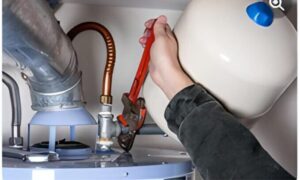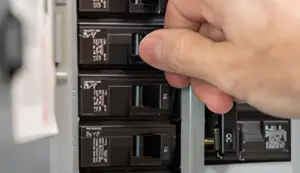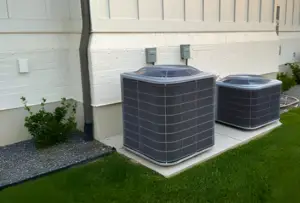Welcome to our comprehensive furnace maintenance guide, where we will delve into the strategies to maximize the efficiency and safety of your heating system.
As the winter months approach, it becomes crucial to ensure that your furnace is well-maintained to avoid potential issues and to optimize its performance.
In this guide, we will explore various aspects of furnace maintenance, from understanding your furnace and the importance of regular upkeep to providing practical tips for DIY maintenance.
Additionally, we will discuss the signs that indicate the need for professional assistance and the benefits of regular professional maintenance.
So, let's embark on this journey together and uncover the key steps to maximize the efficiency and safety of your furnace.
Understanding Your Furnace
A furnace is a heating system that circulates warm air throughout your home by utilizing components such as a thermostat, burner, heat exchanger, blower, and flue. It is designed to provide efficient and effective heating by using various fuel sources, including natural gas, oil, propane, or electricity.
The thermostat controls the temperature settings, while the burner ignites the fuel, producing heat. The heat exchanger transfers the heat to the air, which is then blown into the living spaces by the blower. The flue removes the byproducts of combustion, ensuring safe operation.
Understanding the components and their functions is crucial for proper furnace maintenance and troubleshooting. By familiarizing yourself with your furnace, you can ensure its optimal performance and safety.
Importance of Regular Maintenance
Regular maintenance of your furnace is of utmost importance to ensure optimal performance and safety. Building upon our understanding of its components and functions, here are five reasons why regular maintenance is crucial:
- Efficient operation: Regular maintenance ensures that your furnace runs efficiently, saving energy and reducing your energy bills.
- Comfortable living environment: A well-maintained furnace heats your home quickly and evenly, keeping your family comfortable during the colder months.
- Prevention of hazards: Neglecting maintenance can lead to safety hazards such as gas leaks, carbon monoxide leaks, and fire hazards. Regular maintenance helps identify and prevent these risks.
- Extended lifespan: Proper maintenance prolongs the lifespan of your furnace, saving you money on premature replacements.
- Professional diagnosis: While regular maintenance can be done by homeowners, professional help may be necessary for complex issues or safety hazards. HVAC technicians can diagnose and fix problems effectively.
Pre-Winter Inspection
Before the arrival of cold weather, conducting a comprehensive inspection of your furnace is essential to ensure optimal performance and safety. A pre-winter inspection involves checking key areas of your furnace to identify any potential issues.
Start by examining the thermostat for accurate temperature reading and proper functioning.
Inspect the filter and replace it if dirty or clogged to improve efficiency.
Evaluate the blower motor for smooth operation and listen for any unusual noises.
Look for cracks or damage in the heat exchanger, as this can lead to carbon monoxide leaks.
Assess the burners for rust or damage.
Finally, evaluate the flue pipe for any signs of damage or blockages.
Performing these checks before winter ensures that your furnace will operate efficiently and safely during the colder months.
DIY Maintenance Tips
To effectively maintain your furnace on your own, it is crucial to follow a set of DIY maintenance tips to ensure optimal performance and longevity. Here are five key tips to help you keep your furnace in top shape:
- Change the filter regularly: Regularly replacing the filter improves furnace efficiency and lifespan by preventing dust and debris from clogging the system.
- Clean the blower: Removing dust and debris from the blower improves efficiency and prevents airflow blockages.
- Check belt tension: Ensuring the blower belt is properly tensioned helps the blower work optimally and reduces strain on the motor.
- Lubricate the motor: Applying lubricant to the motor's moving parts prevents friction and keeps the motor running smoothly.
- Consult the owner's manual: Always turn off the power before performing maintenance and consult the owner's manual for specific instructions on your furnace model.
Following these DIY maintenance tips will help you maximize the efficiency and safety of your furnace.
When to Call a Professional
When it comes to maintaining the optimal performance and safety of your furnace, there are certain situations that may require the expertise of a professional HVAC technician.
While regular maintenance is important, there are signs that indicate the need for professional help. Unusual noises, strange smells, frequent breakdowns, uneven heating, and high energy bills are all indicators that something may be wrong with your furnace.
In these cases, it is best to call a professional to diagnose and fix any complex issues. Additionally, if you suspect safety hazards such as gas leaks or carbon monoxide leaks, immediate professional assistance is necessary.
Regular professional maintenance can also help prevent major problems from occurring, ensuring the efficiency and safety of your furnace for years to come.
Frequently Asked Questions
How Often Should I Schedule Professional Furnace Maintenance?
Professional furnace maintenance should be scheduled at least once a year. However, additional maintenance may be necessary if there are any signs of unusual noises, strange smells, frequent breakdowns, uneven heating, or high energy bills.
What Are Some Common Signs That My Furnace Needs Repairs?
Common signs that your furnace needs repairs include unusual noises, strange smells, frequent breakdowns, uneven heating, and high energy bills. If you experience these issues, it is important to call a professional HVAC technician for diagnosis and necessary repairs.
Are There Any Specific Safety Precautions I Should Take When Performing DIY Furnace Maintenance?
When performing DIY furnace maintenance, it is crucial to take specific safety precautions. These include turning off power, consulting the owner's manual for instructions, and wearing protective gear. Safety should always be a top priority to prevent accidents or injuries.
Can I Use Alternative Fuels, Such as Biodiesel or Wood Pellets, in My Furnace?
Yes, alternative fuels like biodiesel or wood pellets can be used in certain furnace models designed for such fuels. However, it is important to consult the manufacturer's guidelines and ensure proper installation and maintenance to maximize efficiency and safety.
Are There Any Government Incentives or Rebates Available for Upgrading to a More Energy-Efficient Furnace?
Yes, there are government incentives and rebates available for upgrading to a more energy-efficient furnace. These incentives aim to encourage homeowners to invest in energy-efficient systems and reduce energy consumption for a more sustainable future.
Conclusion
In conclusion, regular furnace maintenance is crucial for maximizing efficiency and safety. By understanding your furnace, performing pre-winter inspections, and implementing DIY maintenance tips, you can improve its performance and lifespan.
However, there are instances where professional assistance may be necessary. By following the practices outlined in this guide, you can ensure that your furnace operates efficiently, saving energy and providing a safe and comfortable home environment.








